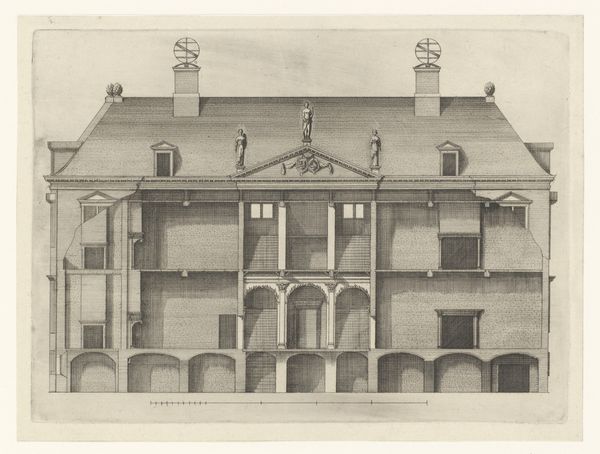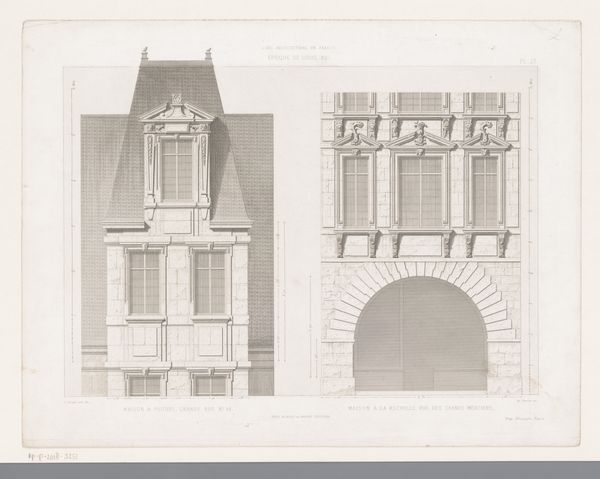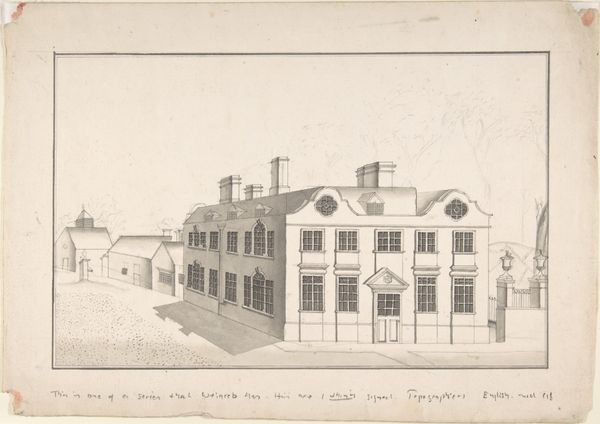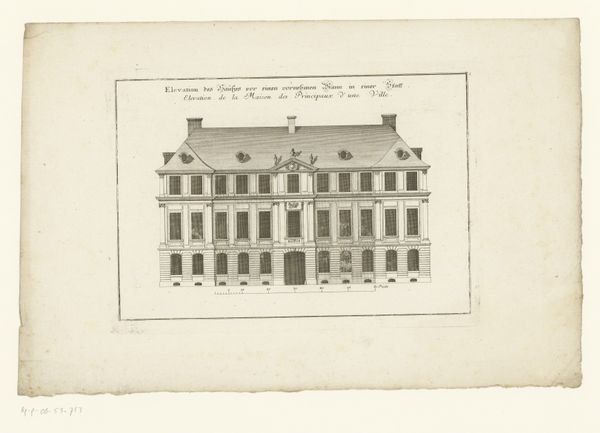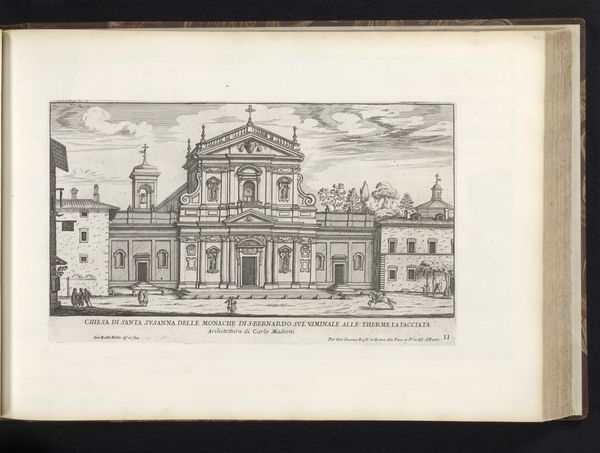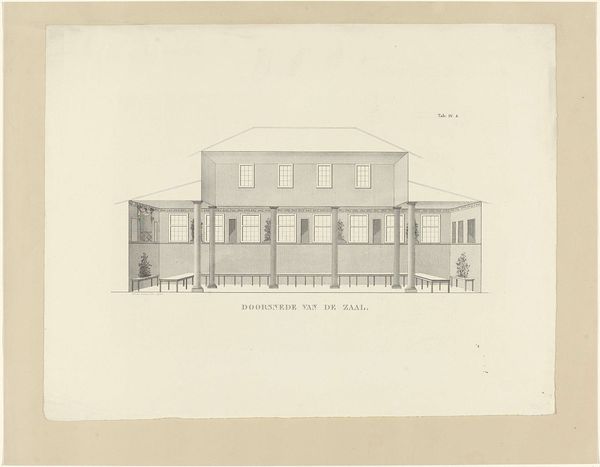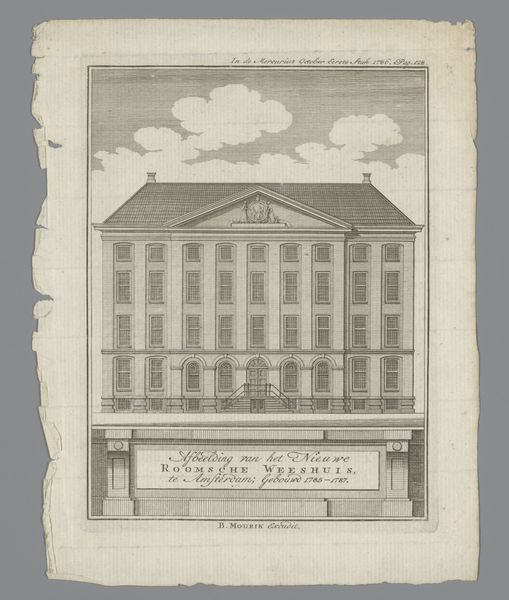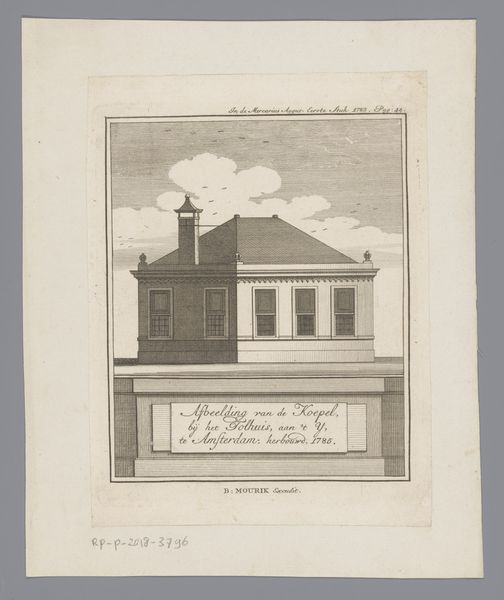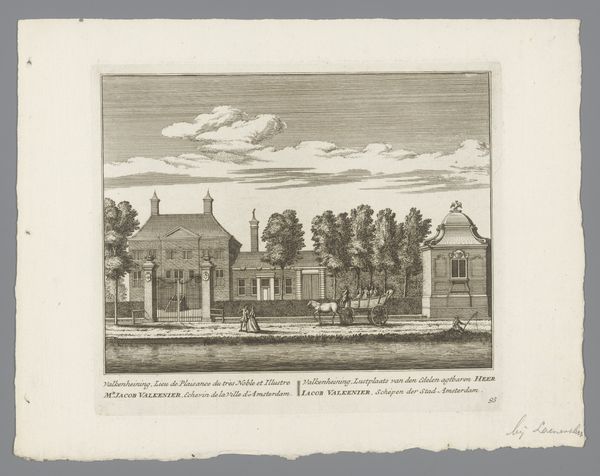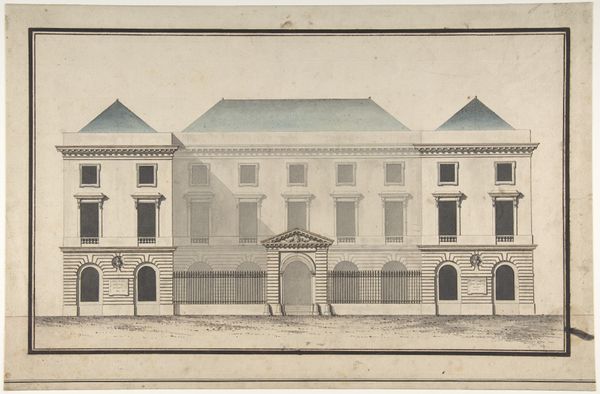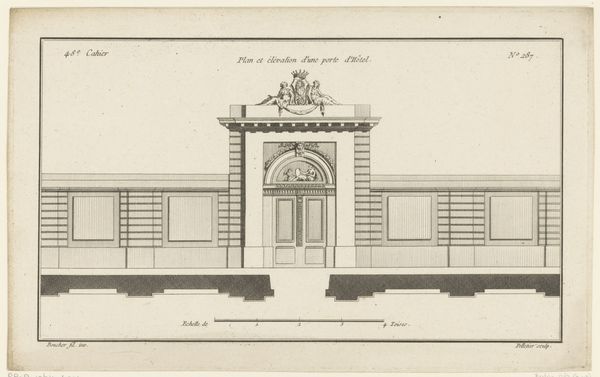
drawing, print, etching, paper, architecture
#
drawing
#
neoclacissism
# print
#
etching
#
paper
#
geometric
#
cityscape
#
architecture
#
realism
Dimensions: height 335 mm, width 514 mm
Copyright: Rijks Museum: Open Domain
Curator: Immediately, there's a coolness to it, a starkness that contrasts with what I'd expect from a theatre depiction. Almost like an architectural blueprint. Editor: This etching from 1774, titled "Zijgevel en het toneel van de Schouwburg te Amsterdam," by Reinier Vinkeles, offers precisely that—a measured look at the theater's structure. You see not only the side facade, rendered with neoclassical precision, but also a cutaway view exposing the stage itself. Curator: Yes, the division is quite clever. It's fascinating how Vinkeles lays bare the mechanics of the stage alongside the theater's respectable public face. It underscores, perhaps intentionally, how constructed both spectacle and social structures are. Editor: Absolutely. Theater has always been a space where social norms are performed, challenged, and reinforced. Showing us both the stage and the exterior, Vinkeles allows us to consider the architecture as a reflection of societal values. Notice how the exterior exhibits this very formal structure to denote class, elitism, and access. Curator: The bareness of the stage in the image is thought-provoking, too. A painted backdrop of trees provides the illusion. It serves as a reminder that theaters are not neutral spaces; they have long histories of serving a specific public function, as they invite the spectator to watch themselves, their social standing, through narrative. Editor: It certainly begs the question of who this theater was *for* and who it was *not* for, whose stories were being centered? The visual orderliness seems to enforce existing power structures. Curator: Precisely. An artistic record like this enables a historical reading, exposing not only the construction but the intellectual and social construction inherent in architecture. Editor: And it’s precisely those underlying constructions that continue to shape contemporary realities and require a critical lens. It becomes a prompt, therefore, to inspect our own frameworks and biases and that makes this architectural print perpetually relevant.
Comments
No comments
Be the first to comment and join the conversation on the ultimate creative platform.
